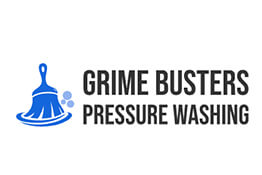Many have heard about the Reverse Osmosis (RO) water filtration system, and its reputation for delivering high-quality, purified water. But how much do you really understand the workings of this water treatment technology? This comprehensive review will give you an in-depth insight into the Reverse Osmosis Water Filter system.
Understanding Reverse Osmosis
The word osmosis originates from the field of biology where it is defined as a physical process that sees water or any solvent moving from an area of low solute concentration to an area of high solute concentration through a semi-permeable membrane. The term reverse osmosis, therefore, comes from “reversing” //the osmosis process. Here, pressure is used to force water from an area of high solute concentration (contaminated water) to an area of low solute concentration (clean water) through a semi-permeable RO membrane. The end-result is safe, high-quality, and tasty drinking water.
Components of a Reverse Osmosis System
Four major components make up the Reverse Osmosis system:
Sediment Pre-Filter: This is the first stage in the filtration system. Its function is to sieve out larger particles like dirt, sediment, and rust.
Carbon Pre-Filter: This second stage removes chlorine and other contaminants that may damage the RO membrane.
RO Membrane: Here, the fundamental reverse osmosis takes place. The semi-permeable membrane eliminates up to 99% of total dissolved solids.
Post-Filter: This final stage polishes the water before you see it straight from the tap. The water passes through a carbon filter to remove any remaining odors or tastes.
Working Principle of a Reverse Osmosis System
How does Reverse Osmosis turn contaminated water into pure, drinkable water?
- When the water enters the system, it first undergoes pre-filtration where large particles are removed.
- The water then passes through a carbon pre-filter that eliminates chlorine and other chemicals.
- The water progresses to the RO membrane, where it’s transformed into high-quality water by active reverse osmosis.
- Finally, the post-filter carries out its polishing job to ensure you have fresh-tasting water.
The Importance of a Reverse Osmosis System
Here are reasons why this water filtration system is beneficial:
Health Protection: An RO system produces water free from harmful contaminants. Thus, it ensures the health of you and your family is not compromised.
Cost Saving: Despite the initial high installation costs, an RO system saves you money in the long run compared to frequently purchasing bottled water.
Environmental Care: Using an RO system cuts down on plastic waste, as the mass purchase of bottled water is not necessary.
Proper Maintenance of a Reverse Osmosis System
Since RO systems do an amazing job providing you with clean drinking water, they require regular maintenance to prolong their lifespan, including:
- Changing the filters: You should replace the pre and post-filters every six to twelve months.
- Replacing the RO membrane: A replacement should occur every two to three years.
- Regular inspections: By ensuring routine system checks, you can detect any existing or impending issues for possible intervention.
When to Consider a Reverse Osmosis System
If the water in your region is heavily polluted with contaminants or your tap water has an unpleasant taste or odor, investing in an RO system is an intuitive decision. It guarantees you an unlimited supply of clean, pure, and tasty drinking water.

Frequently Asked Questions about Reverse Osmosis Water Filter
Is it necessary to use a reverse osmosis water filter for drinking water?
While it isn't "necessary" to use a reverse osmosis filter for your drinking water, it can certainly be beneficial. This is because the reverse osmosis filtration process can effectively remove potentially harmful contaminants from your water such as lead, chlorine, and bacteria, providing a more pure and healthy drinking water.
What does a reverse osmosis water filter remove?
A reverse osmosis filter is capable of removing up to 99% of over 1,000 contaminants from your water. These include but are not limited to chlorine, fluoride, lead, mercury, pesticides, detergents, and nitrates. It is also very effective at removing bacteria, viruses, and other microorganisms.
How often should I change the filters in a reverse osmosis system?
You should typically change the pre-filters (sediment pre-filter and carbon pre-filter) every 6-12 months and the post-filter (carbon block) every 12-18 months. The main reverse osmosis membrane can last between 2-3 years. However, the frequency may differ based on the water quality and use, so it's always best to refer to the owner's manual or contact the manufacturer for specific guidelines.
Will a reverse osmosis water filter alter the taste of the water?
Yes, a reverse osmosis system can improve the taste of the water, producing crisp, clean, refreshing water. This is because the filtration process effectively removes the contaminants and minerals that often contribute to a bad taste or odor in the tap water.
Can a reverse osmosis water filter waste water?
Yes, reverse osmosis systems do use water in their process, and not all the water input comes out as filtered water. However, newer, more efficient systems have improved this, and some feature water-saving technology that can minimize the amount of water waste.
Can a reverse osmosis water filter remove minerals?
Yes, in fact, a reverse osmosis system can filter out many minerals due to its fine filtration process. While most minerals in the water are beneficial to your health, some, like lead and mercury, can be harmful.
Can I install a reverse osmosis water filter on my own?
While it's technically possible to install a reverse osmosis system on your own, it's generally recommended to have a professional handle the installation. This is due to the complexity of the equipment and the importance of proper installation to ensure the system functions correctly.
How long does a reverse osmosis system usually last?
A high-quality reverse osmosis system can provide you with clean water for 10-15 years, given that you properly maintain it and timely replace filter cartridges and the system's RO membrane. However, lesser quality systems may need replacement every 4-7 years.

Pros of Reverse Osmosis Water Filters
Superior Removal of Contaminants
Reverse osmosis water filters offer impeccable filtration capabilities. RO systems can remove up to 99% of water contaminants, including heavy metals, pesticides, bacteria, and viruses, which other filters might miss. Other common pollutants, like chlorine, lead, and fluorides, are also effectively eliminated, providing clean and safe water consumption.
Better Taste
A standard advantage of using an RO system is the improved taste of water. Clean, filtered water typically tastes better than tap water because it’s free from impurities, chemicals, and other unwanted particles. If you're unsatisfied with the taste of your tap water, an RO system might offer a deeper level of filtration that will result in superior taste.
Easy Maintenance
The maintenance of reverse osmosis water filters isn't complex. In many cases, it simply involves replacing the filter cartridges once or twice a year, depending on your water usage and system's specifications. This ease of maintenance means you don't need specialized knowledge or skills to keep your RO water filter running optimally.
Long-lasting and Cost-Effective
While the initial investment in an RO system may be higher than other filters, an RO filter often proves to be more cost-effective in the long run. The durability of RO systems saves you from frequent replacements and unexpected repairs. By eliminating bottled water expenses and considering potential health costs due to contaminated water, it is a worthwhile investment.
Cons of Reverse Osmosis Water Filters
Wastage of Water
One of the significant downsides of using an RO system is water wastage. Conventional RO systems dispel more water than they purify, with an estimated 2-3 gallons wasted for every gallon of purified water. For regions battling water scarcity, this might not be an ideal filtering solution.
Slow Filtration Process
Since the RO process relies on water pressure and filtration precision, it can be slower than other filtration methods. Filling a water pitcher or waiting for a glass to fill up might take longer than you expect. Some users may find this slightly inconvenient, especially in larger households.
Removal of Some Beneficial Minerals
RO filters are so efficient that they also remove some essential minerals (like calcium and magnesium) dissolved in the water. Some studies argue that these minerals could substantially contribute to our daily mineral intake. However, alternative methods to replenish these essential minerals are available, including a balanced diet or mineralization filters.
Initial Cost and Installation
Although cost-effective in the long run, the initial setup cost of an RO system is relatively high. The cost can vary depending on the model, features, and the quality of the system. Plus, installation might be complex and require professional help, further adding to the initial cost.
Regular Maintenance
Though maintenance is not overly strenuous, it does require diligence. Filters must be replaced regularly for the system to function correctly, and failure to do so might result in a less efficient system or lower water quality. This ongoing maintenance is a con to be considered for those who might not have the time or forget to change filters.

Myths and Misconceptions about Reverse Osmosis Water Filter
Reverse osmosis water filters have gained popularity in recent times due to their effectiveness in purifying water. However, along with this popularity, there have been a number of myths and misconceptions about these water filtration systems.
Myths and Misconceptions about the Efficiency of Reverse Osmosis (RO) Filters
Myth: All RO filters remove 100% of contaminants
While reverse osmosis filters are highly efficient, it’s wrong to assume that they remove 100% of all contaminants. Most of the quality RO systems manage to remove between 90-99% of harmful contaminants, which is quite impressive.
Misconception: RO filters waste a lot of water
The process of reverse osmosis does require more water than it actually produces, but to categorize this as a waste is a misconception. The water considered 'wasted' is the water used to flush the system and remove the contaminants, crucial to keep your system working properly and effectively.
Myths and Misconceptions about the Maintenance of RO Filters
Myth: RO filters are maintenance-free
Reverse osmosis systems require regular upkeep to maintain their functionality. This includes regular filter changes (every 6-12 months), RO membrane replacement (every 2-3 years), and periodic system sanitizing.
Misconception: All RO membranes and filters are the same
Not all filters and membranes are produced the same way. There are varied quality levels in the market and buying the cheapest version might not be the best decision. Be sure to research your specific RO system for filter and membrane requirements.
Myths and Misconceptions about Health and RO Filters
Myth: RO-filtered water is harmful to our health because it removes important minerals
Filtered water does indeed have lesser minerals than unfiltered tap water, yet the amounts are often negligible. Critical minerals for our health can't be sufficiently supplied by drinking water alone, but rather require a balanced diet.
Misconception: Drinking RO water can lead to mineral deficiencies
While reverse osmosis does indeed remove many minerals from water, it's important to remember that most of our mineral intake should come from food, not water. In reality, the primary function of water in our bodies is for hydration, not nutrition.
Myths and Misconceptions about the Cost of RO Filters
Myth: RO filters are too expensive to afford
The upfront costs of a reverse osmosis system can appear high, but it is important to consider the long-term cost savings. Choosing to invest in an RO system can be much more cost-effective in the long run compared to frequent purchasing of bottled water.
Myths and Misconceptions about the Installation of RO Filters
Myth: Installing an RO system is difficult and requires a professional
Plenty of reverse osmosis systems are designed to be DIY-friendly, requiring minimum plumbing knowledge. Comprehensive installation manuals and online tutorials make this process even easier for homeowners. However, if you're uncomfortable with tackling the installation yourself, professional installation is still a viable option.
These myths and misconceptions can misconstrue the reality of reverse osmosis water filters and create uncertainty about their efficiency, cost-effectiveness and maintenance. It’s therefore crucial to separate fact from fiction when choosing the right water filtration option for you.
Summary
So, we've looked at the ins and outs of the reverse osmosis water filter. This awesome piece of technology can be a major game-changer, especially for those living in areas where the water supply is laden with harmful contaminants. By using a process that mimics nature, it delivers safe, clean, and pure water right from your kitchen tap. It's a no brainer that if health and safety are your priority, investing in this type of water filter is a smart move.
One of the major selling points about reverse osmosis water filter is its ability to remove up to 99% of contaminants. That means you're getting the healthiest water possible for you and your family. It might take a bit longer to filter than other systems and yes, it does waste some water along the way, but the end result is worth it.
Overall, remember that while the initial cost can be steep, the long-term benefits outweigh this. With a reverse osmosis water filter, you're not just investing in a water filter; you're investing in your health. After all, you can't put a price tag on the peace of mind that comes with knowing every glass of water you drink is free from potentially harmful contaminants. It’s a brilliant solution for those who are serious about the quality of their drinking water.
About KYPD Plumbing
KYPD Plumbing, located in the heart of Lexington, KY, is your go-to company for all your plumbing needs. With years of experience under our tool belts, we pride ourselves on our ability to provide reliable, cost-effective solutions to our clients. Our team of highly skilled professionals is known for punctuality, cleanliness, and a knack for getting the job done right the first time. Whether you're dealing with a small leak or a big installation project, KYPD Plumbing has you covered. Oh, and did we mention that we are completely dedicated to ensuring that our customers are 100% satisfied? Because your peace of mind is our top priority.
Tags: water purification, drinking water, filtration system,














